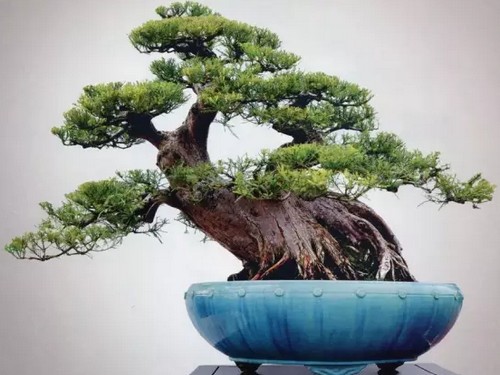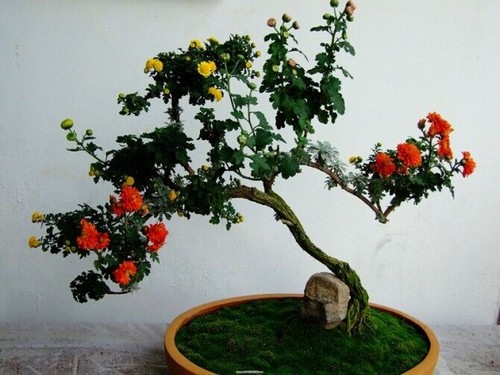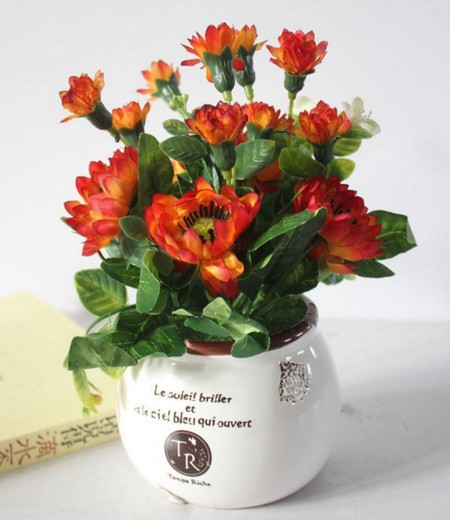Cultivation of Pinus glyptostroboides potted landscape
Pinus mandshurica is known as "plant living fossil". There is only one species of deciduous or semi-deciduous tree in Taxodiaceae, which is a relict plant in the world. It is endemic to China and is a national first-class precious tree species with uniqueness in the world. In 2006, it was selected as a "relic plant" stamp by the State Post Office and became a famous brand of the country.

Pinus mandshurica is a light-loving tree species, likes warm and humid climate and water-wet environment, is resistant to water and low temperature, and has strong adaptability to soil. it can grow on all kinds of soils except saline-alkali soil, and the growth is best on alluvial soil with more water.
Water pines like light and require full light from the beginning of the seedlings. Like warm and humid environment, the average annual temperature is 1522 ℃, and can withstand high temperature of 40 ℃ and low temperature below 10 ℃. The annual rainfall is required to be 1500-2000 mm, and the more abundant the rainfall is, the more beneficial it is to its growth. Extremely resistant to water and moisture, it is born on both sides of rivers, dikes and ridges, and grows best on a site of 15cm to 30cm above the tide line.
Main points of cultivation:
The dry-sown Pinus elliottii blossoms from February to March and the cones mature from October to November. When the cones change from pink green to light yellow and the scales begin to crack, they should be collected in time. There are about 85000 seeds per kilogram and the germination rate is 5060%. The "water breeding method" is generally adopted in raising seedlings, that is, planting seeds in bed around the ground in winter, and transplanting in the flat bed of the paddy field when the seedling height is 20 to 25 centimeters, with a row spacing of 20 to 25 centimeters, irrigation every morning, keeping the depth of the water surface 3 to 5 centimeters, and draining the water at night. Do not raise seedlings in stagnant water. When the seedling is 1.5 meters high, it can be planted out of the nursery. The suitable row spacing is 1.5 × 1.5 m ~ 1.5 × 2.0 m. Within 2-3 years of planting, attention should be paid to protecting the terminal buds of the trunk of young trees and weeding and cultivating soil.
Reproduce with seeds. When the cones are yellowish brown, the seeds can be harvested, dried in the sun, stored for sowing in February to March of the following year, and germinated in about 20 days, keeping the seedbed moist and shaded properly. The average height of one-year-old seedlings of Pinus elliottii is 40cm to 60cm, and the highest is 1m. It can be afforestation in the second spring. Cutting method can also be used to raise seedlings.
For making bonsai trees, the trunk diameter is 10-15 cm, and the first truncation is best in May. At 20-25 cm above the ground, the trunk is sawed, the bad roots are removed, and the stumps are planted in a dense tile pot. The stump is obliquely placed in the basin filled with soil and filled with water. After the new buds of the saw section are sent out, one of the stout branches is selected and the rest is cut off. After 1 year and 2 years, when the new seedling grew to the top of the tree, the cross section basically healed, and the angle between the pile under the tree and the pile on the tree was 30 degrees.
Dig up the whole tree for the second time and cut it off with a saw at 20 cm on the first sawing plane. If you put it in the basin oblique to the left for the first time, put it in the basin in the opposite direction for the second time, and follow the practice for the second time. After three times of cutting, the stump of Pinus elliottii rises in the shape of bamboo shoots and rises in a curve, and the shape of the trunk achieves its goal.
Time: 2019-05-25 Click:
- Prev

Planting techniques of potted Chrysanthemum
Chrysanthemums are cultivated all over the country, among which the famous ones are chrysanthemum from Anhui, Hangzhou white chrysanthemum from Zhejiang, Huai chrysanthemum from Henan, and Qi chrysanthemum from Hebei, which are important Chinese herbal medicines exported to Hong Kong, Macao and Taiwan. Chrysanthemums like warm and humid climates. Resistant to cold, flowers can withstand micro-frost. Underground roots and rhizomes can survive the winter in North China.
- Next

Planting methods of potted carnations
Carnation, also known as carnation, is a perennial herb of the Carnation family. Its flower color is delicate and fragrant, and its florescence is long. It is an important cut flower plant in the world and is widely cultivated all over the world. Today, the editor recommends the following planting techniques: 1. Soil: good drainage and rich humus are required.
Related
- Fuxing push coffee new agricultural production and marketing class: lack of small-scale processing plants
- Jujube rice field leisure farm deep ploughing Yilan for five years to create a space for organic food and play
- Nongyu Farm-A trial of organic papaya for brave women with advanced technology
- Four points for attention in the prevention and control of diseases and insect pests of edible fungi
- How to add nutrient solution to Edible Fungi
- Is there any good way to control edible fungus mites?
- Open Inoculation Technology of Edible Fungi
- Is there any clever way to use fertilizer for edible fungus in winter?
- What agents are used to kill the pathogens of edible fungi in the mushroom shed?
- Rapid drying of Edible Fungi

